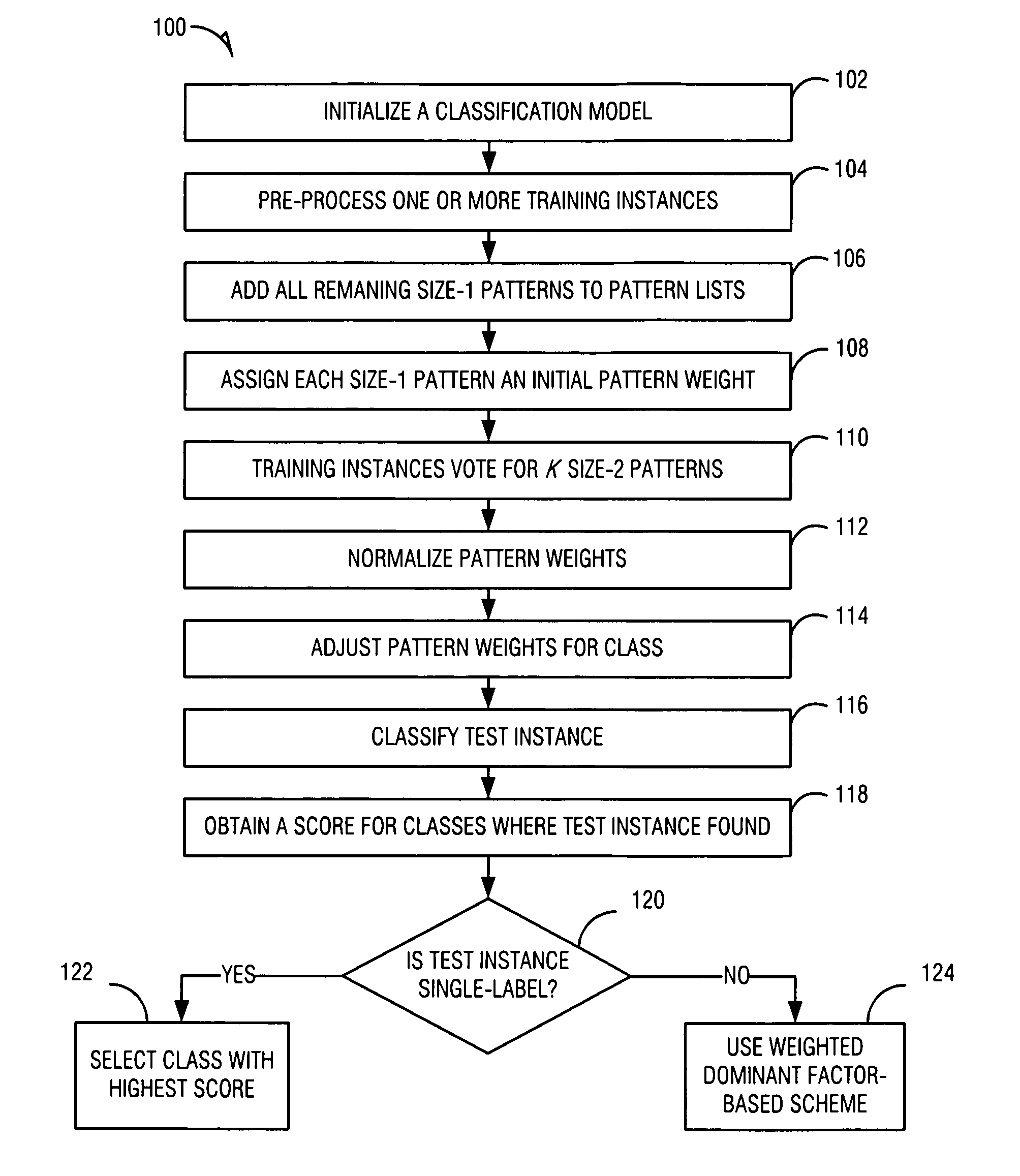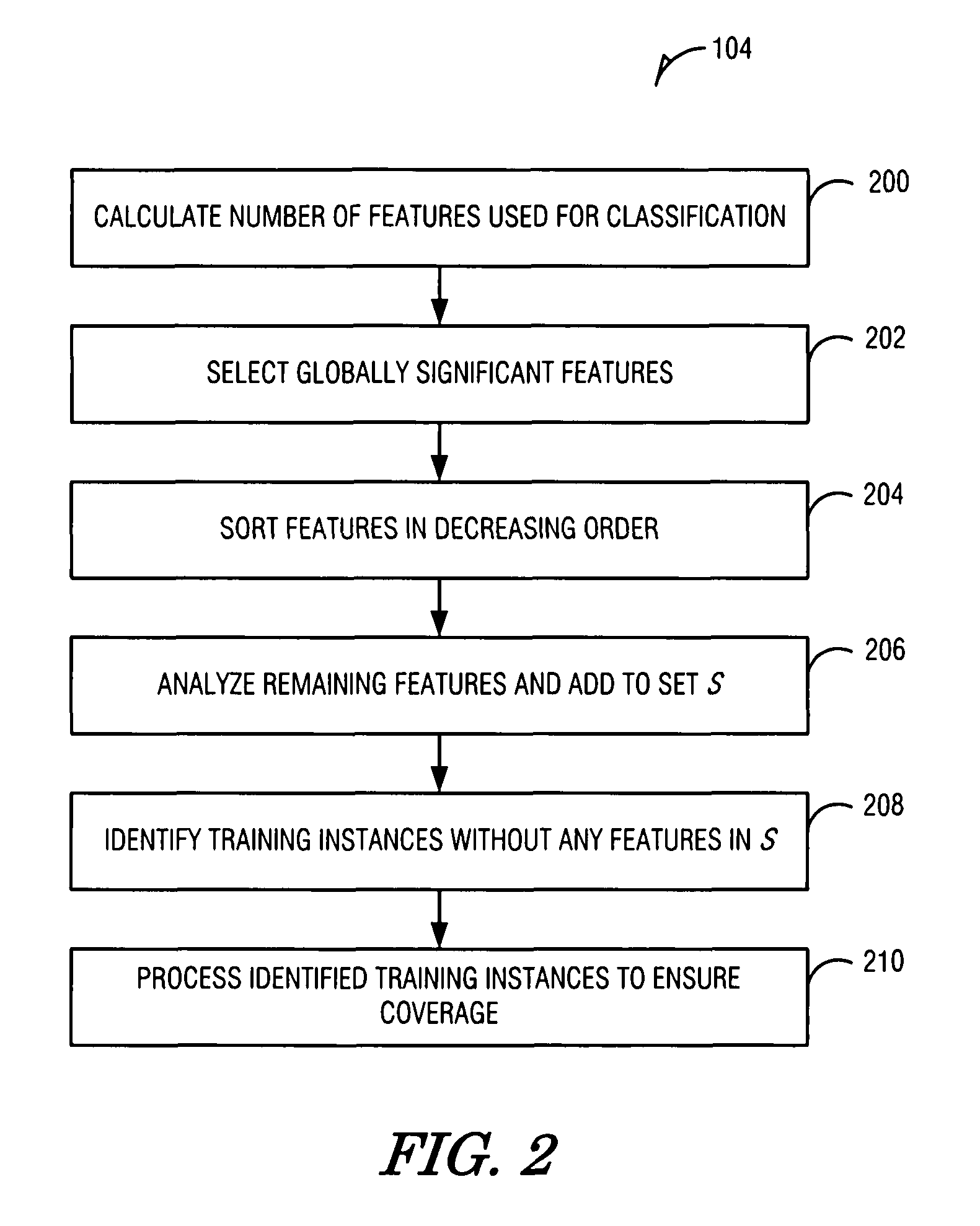Data classification and hierarchical clustering
a data classification and hierarchical clustering technology, applied in the field of data classification and hierarchical clustering, can solve the problems of complex and expansive data mining process, and achieve the effect of reducing dimensionality, effective balance, and facilitating hierarchical document clustering efficiency
- Summary
- Abstract
- Description
- Claims
- Application Information
AI Technical Summary
Benefits of technology
Problems solved by technology
Method used
Image
Examples
Embodiment Construction
Overview of Data Classification Techniques
[0028]In general, data classification can employ a learning routine that uses a training set of data to develop pattern rules. The pattern rules can be used to analyze data and classify the data into one or more classes. The classes can then be used in various post-processes, such as sorting, counting, or displaying.
[0029]Data classification can involve machine learning processes such as SVM, C4.5, and kNN. The classification model in a data mining based classification process can include frequent patterns that form classification rules. These patterns can be obtained by applying various pruning heuristics to reduce a large search space. One example uses a minimum support threshold as the heuristic and can be used as one mechanism to filter a significant percentage of candidate patterns. A further example can use a second measure, such as confidence, information gain, or chi-square, for additional filtration of the candidate patterns. Settin...
PUM
 Login to View More
Login to View More Abstract
Description
Claims
Application Information
 Login to View More
Login to View More - R&D
- Intellectual Property
- Life Sciences
- Materials
- Tech Scout
- Unparalleled Data Quality
- Higher Quality Content
- 60% Fewer Hallucinations
Browse by: Latest US Patents, China's latest patents, Technical Efficacy Thesaurus, Application Domain, Technology Topic, Popular Technical Reports.
© 2025 PatSnap. All rights reserved.Legal|Privacy policy|Modern Slavery Act Transparency Statement|Sitemap|About US| Contact US: help@patsnap.com



